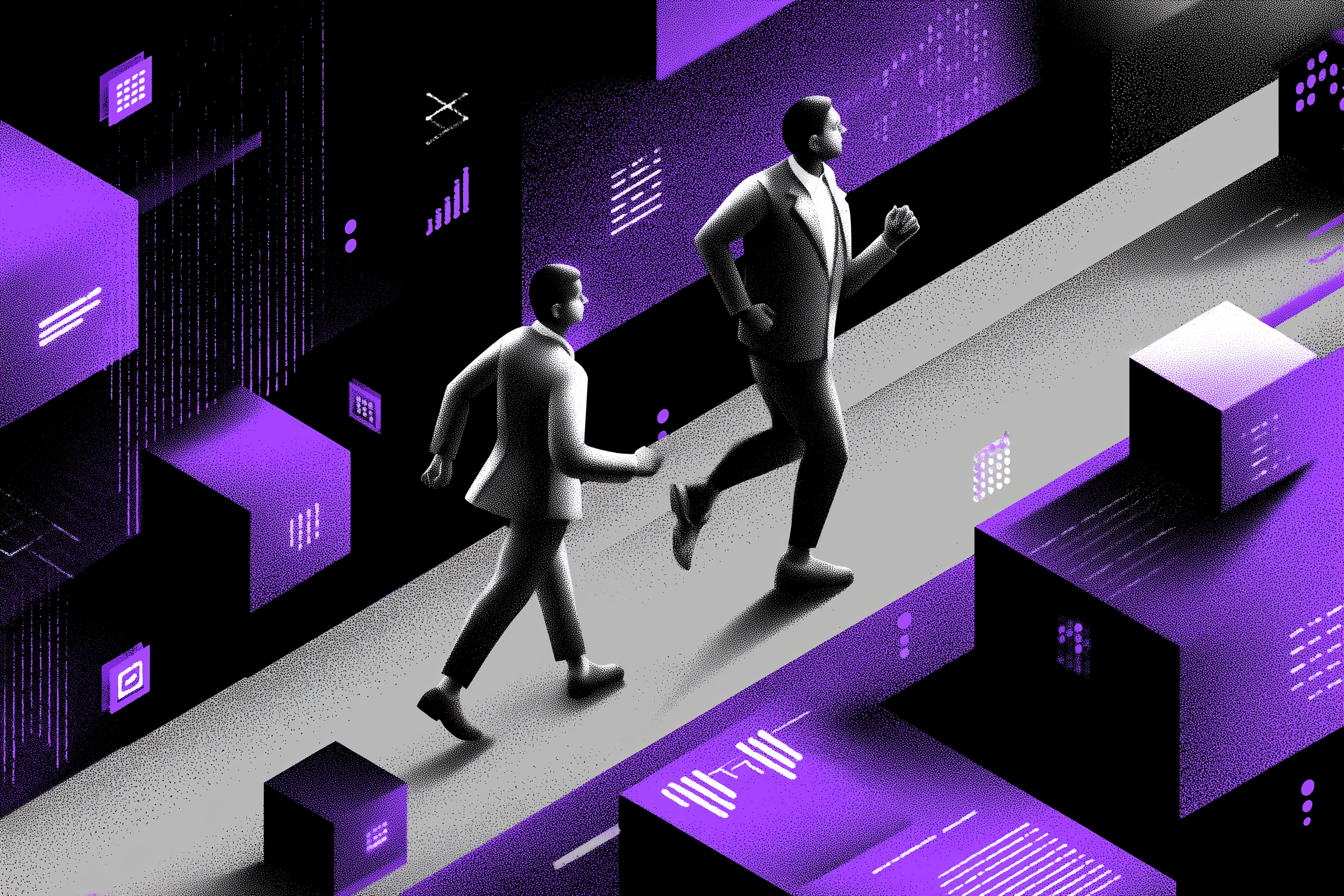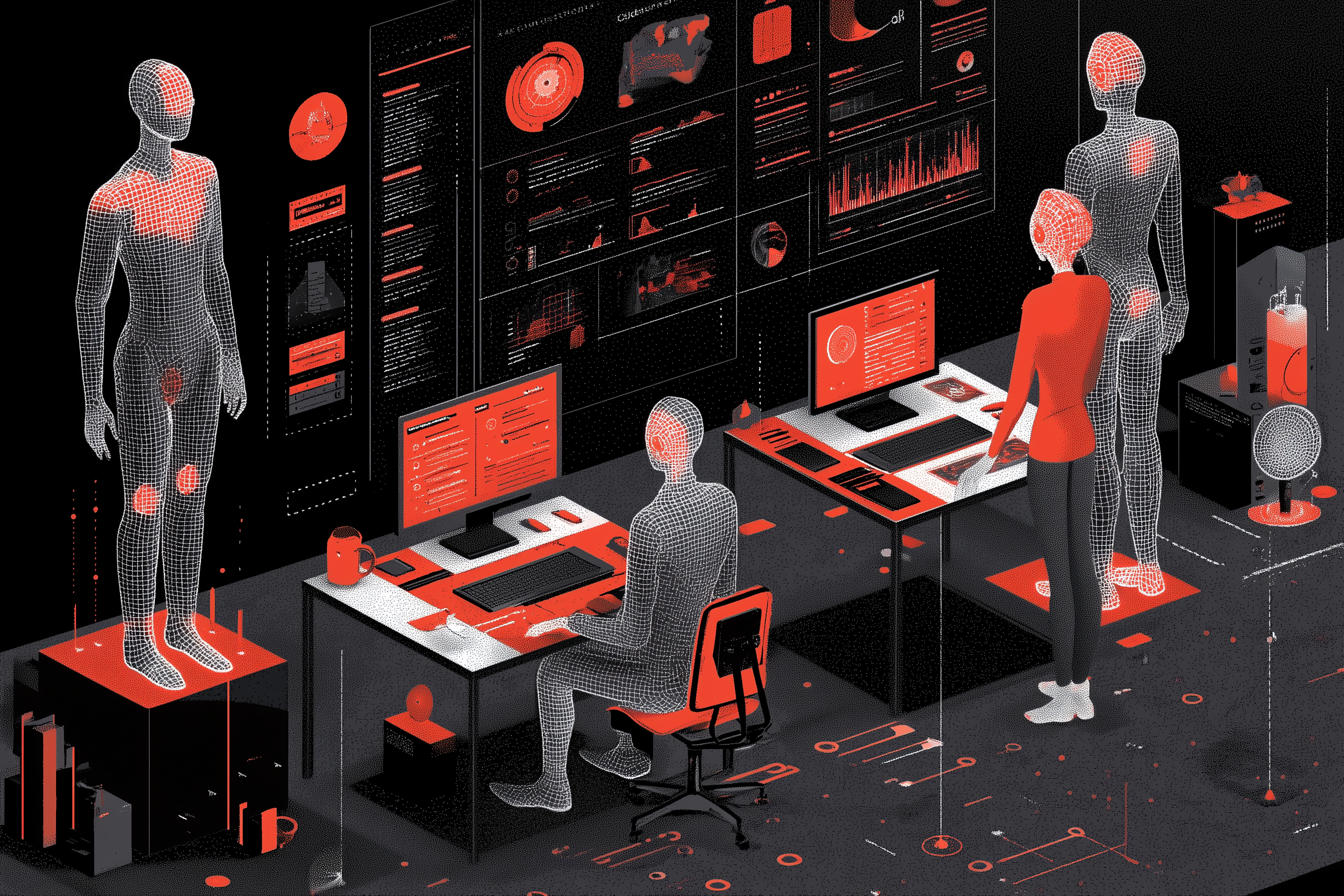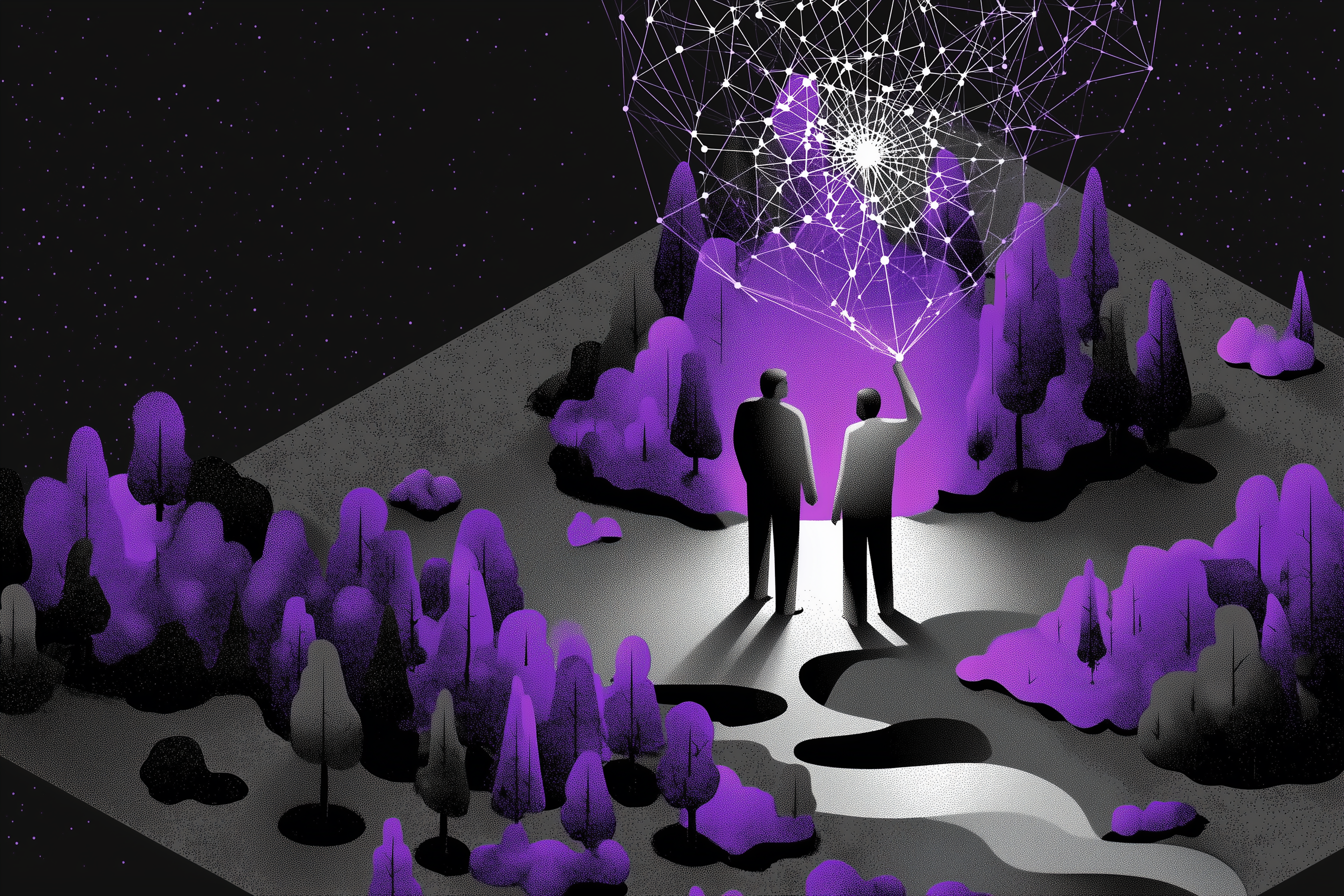Automation and AI : accelerate creative production without losing quality

How automation and AI accelerate creative production while ensuring quality, consistency, and productivity for marketing teams
Why automation and AI are redefining creative production
The integration of artificial intelligence and automation is profoundly transforming creative production processes. These technologies no longer simply accelerate execution steps—they enhance the quality of deliverables, strengthen consistency across channels, and significantly increase team productivity.
Applied AI now plays a concrete role: generating first drafts, assisting ideation, producing multi-format variations, and automatically analyzing visual or editorial consistency. Automation, meanwhile, handles repetitive technical operations that fragment creative focus. Together, they free valuable time for artistic direction, conceptual work, and pure creativity.
In this context, creative automation refers to tools and methods that delegate systematic tasks to intelligent systems. Generative AI adds an additional layer of analysis and production, accelerating creation and multiplying exploratory possibilities. The goal is no longer just to produce faster, but to create more intelligently while maintaining a high level of creative rigor.
Key benefits of automation and AI in creative production
Reducing repetitive tasks and saving time
A significant portion of creative time is consumed by technical work. Automation handles multi-format adaptations, exports, quality checks, or the preparation of preliminary versions.
According to McKinsey & Company, generative AI could increase labor productivity by 0.1% to 0.6% per year by 2040, representing major potential for marketing and creative teams.
Strengthened visual and editorial consistency
Automation makes it easier to systematically verify graphic elements such as colors, typography, logos, margins, and ratios. AI reinforces this by detecting stylistic or editorial inconsistencies between versions, reducing repeated revisions and maintaining strong brand consistency.
Faster validation workflows
Validation steps often represent a bottleneck. Automated routing, smart notifications, and technical pre-checks dramatically reduce back-and-forth exchanges and streamline the process from draft to approval.
Re-focusing on creative value
By reducing execution time, creative teams can dedicate more energy to artistic direction, ideation, and concept development. Automation becomes a tool that amplifies human creativity rather than replacing it.
How automation transforms creative workflows
Better-structured operational processes
Tasks once considered time-consuming—such as adapting formats for social networks, performing technical quality checks, or tagging assets in a media library—are now easily automated. These automations reduce errors, improve precision, and eliminate time loss caused by micro-tasks.
Generative AI as a direct creative support
Generative AI plays a key role in ideation and creative variations. It can produce moodboards, generate slogans, create alternative versions, or suggest visual improvements.
According to McKinsey, 75% of organizations already use AI in at least one business function.
Gradual adoption is essential
Successful integration of AI and automation requires a progressive approach: identifying automatable tasks, running pilot tests, adjusting processes, training teams, and tracking key indicators such as production time and revision rates.
Applied AI and creative quality
Maintaining high creative standards
Accelerating production must not come at the expense of quality. Human supervision remains essential to ensure artistic relevance, verify editorial consistency, and adjust automated suggestions when necessary.
Avoiding over-automation
Certain creative dimensions must remain human-driven: storytelling, sensitive aesthetic decisions, cultural nuances, and emotional tone. Preserving these elements ensures the brand maintains its uniqueness.
Human + AI complementarity
A 2025 study by Holzner, Maier & Feuerriegel shows that teams combining AI with human supervision achieve better-rated creative outcomes than teams not using AI. AI amplifies potential, but humans remain the architects.
Creative automation and team performance
A sustainable productivity lever
According to PwC via Reuters, AI-intensive sectors recorded a 4.3% productivity increase between 2018 and 2022, compared to 0.9% in less-automated sectors.
In creative production, these gains translate into reduced production cycles, higher output volume, fewer revisions, greater variation capacity, and improved overall consistency.
An expert perspective
As McKinsey & Company summarizes, “AI does not replace humans—it amplifies their creativity, productivity, and impact.”
Integrating MTM into creative workflows
MTM provides a foundational structure for creative production: asset centralization, validation management, versioning, commenting, secure sharing, and project tracking. The platform ensures every version is traceable, validations are streamlined, and teams work in a reliable environment capable of supporting accelerated production.
The future of creative production: a hybrid model between automation, AI, and human expertise
Automation and artificial intelligence are becoming essential to strengthen speed, consistency, and quality in creative production. Their impact relies on a hybrid model where technology streamlines execution and frees time, while humans retain responsibility for vision, artistic direction, and message relevance.
To fully leverage this dynamic, teams need strong organizational foundations and well-structured workflows. A platform like MTM plays a key role by offering a clear, centralized, and collaborative environment to orchestrate the entire creative process. Combining a robust infrastructure with the opportunities offered by automation and AI enables organizations to produce faster, more efficiently, and with consistent quality.
FAQ – Frequently asked questions about automation and AI in content creation
What is creative automation?
Creative automation refers to tools and methods that handle repetitive production tasks—such as variations, technical checks, and format adaptations—so teams can focus on higher-value creative decisions.
How does AI accelerate content creation?
Generative AI quickly produces ideas, visual variations, first text drafts, and optimization suggestions. It helps teams start faster, explore more directions, and maintain consistent quality.
Which tasks can be automated in a creative workflow?
The most common automated tasks include multi-format adaptation, quality control, asset tagging, version variation, export preparation, and validation routing.
How can creative quality be maintained when using AI?
Combining human oversight with clear templates, brand guidelines, and manual checkpoints ensures consistent quality even when production is accelerated.
Which tools support creative workflow automation?
Teams often rely on a creative project management platform like MTM to organize assets, validations, and collaboration, paired with external AI tools for ideation, testing, or visual variations.
Sources
McKinsey & Company – The Economic Potential of Generative AI
McKinsey & Company – The State of AI 2025
McKinsey & Company – Superagency Report 2025
PwC via Reuters – Productivity Surge in AI-Intensive Sectors
Holzner, Maier & Feuerriegel – Generative AI and Creativity (arXiv 2025)
Other Posts

Agentic AI : the concrete use cases that are transforming marketing and creative workflows in 2025

Has the digitalization of project management led to a loss of sense of community?

